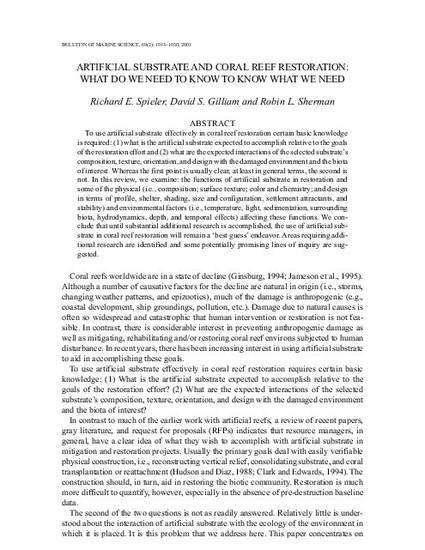
To use artificial substrate effectively in coral reef restoration certain basic knowledge is required: (1) what is the artificial substrate expected to accomplish relative to the goals of the restoration effort and (2) what are the expected interactions of the selected substrate’s composition, texture, orientation, and design with the damaged environment and the biota of interest. Whereas the first point is usually clear, at least in general terms, the second is not. In this review, we examine: the functions of artificial substrate in restoration and some of the physical (i.e., composition; surface texture; color and chemistry; and design in terms of profile, shelter, shading, size and configuration, settlement attractants, and stability) and environmental factors (i.e., temperature, light sedimentation, surround biota, hydrodynamics, depth, and temporal effects) affecting these functions. We conclude that until substantial additional research is accomplished, the use of artificial substrate in coral reef restoration will remain a ‘best guess’ endeavor. Areas requiring additional research are identified and some potentially promising lines of inquiry are suggested.
Available at: http://works.bepress.com/david-gilliam/9/
